This is How Color Psychology Can Influence Your Life
They are all around us and many times they affect us on a subconscious level. Yes, given the title of this blog post, you already know I am talking about colors. Furthermore, a concept called color psychology is used to sell us things, to influence our emotions, to affect our state of mind and to even seduce us (if we are lucky)!
“Colors, like features, follow the changes of the emotions.”
–Pablo Picasso
Well said Pablo, well said. Artists, as well as anyone, understand the power of color and how it can affect our moods, emotions, and feelings.
It’s true, isn’t it? I know personally, blue has a calming and relaxing effect on me, while red gets me fired up.
“But what about pink?” you ask…
Thank you for the perfect segue, my friend…before we go any further, check out this photo:
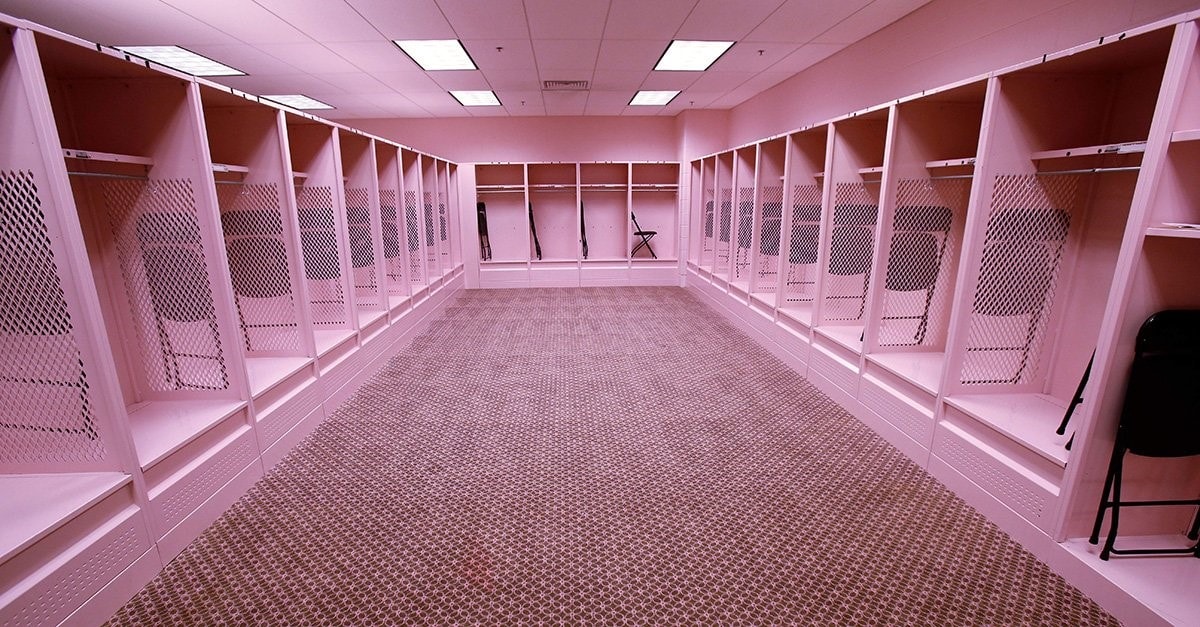
The photo above is a photo of the visiting football locker room at the University of Iowa. The idea is that pink is said to have a calming and soothing effect. In a sport where aggressiveness is valued as much or more than any other trait, it is an interesting tactic used to try to get into the collective heads of the other team in the hope that their calmness and passivity will continue once they hit the playing field.
Ronald McDonald and McDonald’s are
A perfect example of how color psychology is used in business to motivate us to buy something. Research has shown that the color red evokes strong emotions and makes you hungry while signaling intensity and passion, while yellow can get your attention. It is no accident that McDonald’s has used these colors to draw you in and stimulate your appetite. Just imagine if McDonald’s colors were green for example, how weird would that be? Others that have leveraged the appetite-stimulating effect of red are Wendy’s, Pizza Hut, KFC, Popeye’s and Coca-Cola – just to name a few.
Wearing red, as we discussed in a previous post, can affect how others see you and in fact was used by a member of the fairer sex on yours truly. More on that later…
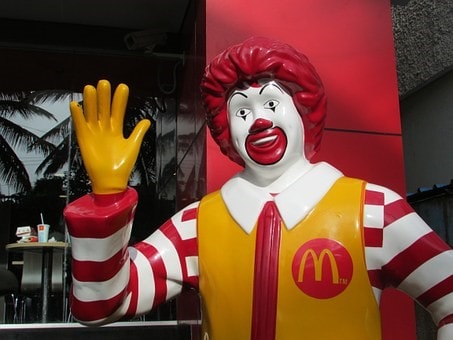
Speaking of Green…
It isn’t used very often in corporate America, but one example where it is used is…Starbucks. Starbucks is the only global brand to use green as its primary color. The green color palette is used by Starbucks to show growth, uniqueness, and freshness.
What Does the Research Say?
Despite the fact that colors are all around us, the research that has been done so far has been more focused on practical uses (think marketing) rather than scientific rigor.
So, much of the stuff we know about color psychology seems to be anecdotal at best. For sure, more research needs to be done on color psychology. However, some experts and researchers have done some good work in observing how it affects our behaviors, moods, and feelings, which leads us to…
A Quick Rundown on What Different Colors are Said to Represent:
While color psychology is somewhat subjective, there are some color effects that do have widespread meaning:
Red:
Attention-getting
Bold
Can evoke strong emotions and increase heart rate
Intensity, movement, and passion
Creates a sense of urgency – used in grading and for sales
Black:
Ominous and powerful
Signals authority and strength
Often used to market luxury brands
Can overwhelm if used too much
Can also symbolize evil and death
White:
Innocence
Can feel fresh and clean
Invokes a sense of youth
Purity
Blue:
Calming and relaxing
Most used in offices
Is said to curb appetite as it reminds you of sterility
Frequently used in corporate settings as it promotes security and trust
Brown:
Boring
Earthy
Reliable and practical
Strength
Orange:
Energy
Excitement
Can be used to show caution
Enthusiasm
Attention
Green:
Associated with health and nature
Tranquility
Money
Used with respect to environmental issues
Pink:
Calming
Romance/Love
Drunk tank pink is sometimes used in prisons to calm inmates
Used to market to females
Gray:
Can show practicality and timelessness
Too much has a numbing effect
Yellow:
Is said to be the most cheerful and happy color and give you energy
Believed to cause eye fatigue
Warmth
Purple:
Royalty (kings wore purple robes)
Wisdom
Mystery
Wealth
Success
Used to promote anti-aging and beauty products
Some Other Interesting Notes About Color Psychology…
Blue is commonly known…
As the most popular color around the world, possibly due to the fact that blue skies and water have positive connotations. Associated with calmness and peace.
Gender differences
I thought this was interesting. A study done by Joe Hallock broke down favorite color by gender:
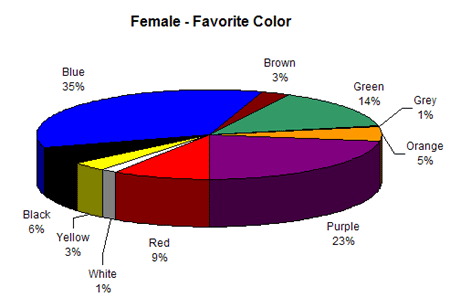
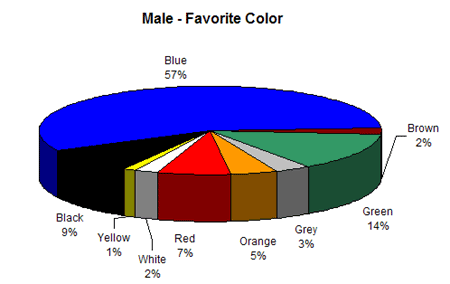
As you can see, blue was the favorite color for both women and men.
In case you are wondering what the least favorite color of each gender was:
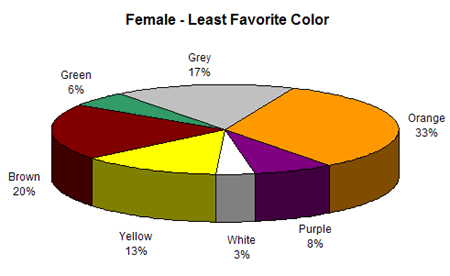
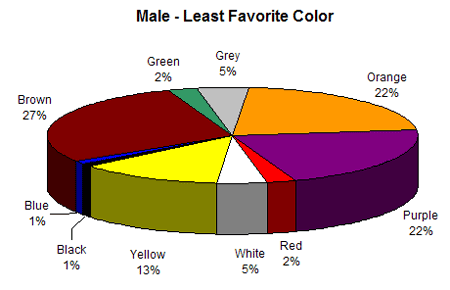
The color of the wall in a room
Can change how the person perceives the room temperature. Colors like orange, red and yellow make people think it is warmer than it is, and colors like blue, green, and light purple – cooler than it is.
Red has been shown
To negatively affect analytical thinking as it makes our reactions more forceful and faster when we see the color. One possible reason that it affects our ability to concentrate may stem from teachers using red ink when grading our tests and assignments as kids – it is associated with failure in achievement. One study even showed that seeing red before taking a test can negatively impact performance.
84.7% of buyers claim
That color is the primary reason for their purchase of a product or service, that is according to this article.
Pink was used to calm children down
In Canadian schools in the late 70s and early 80s. Growing up in Canada at that time, I feel like my bratty behavior was manipulated!!
Color psychology can also be a function of…
Your culture and your previous experience with it. For example, Sally Augustin, Ph.D. an expert in the subject dislikes a certain shade of blue because it reminds her of an allergy medicine she had to take when she was a child.
How and When to Use Color Psychology:
There are a few ways you can experiment with color psychology in your life. I say ‘experiment’ because we all react differently, and it depends on what you are trying to accomplish and how different colors affect you.
When decorating rooms in your house, study colors and the effect you want them to have:
 Perhaps go with blue for bathrooms as they can make you feel calm and refreshed as if you are entering a spa
Perhaps go with blue for bathrooms as they can make you feel calm and refreshed as if you are entering a spa
 Maybe you want to go with red in your bedroom if you want to ignite some passion or green if you a feeling of tranquility and health.
Maybe you want to go with red in your bedroom if you want to ignite some passion or green if you a feeling of tranquility and health.
 You may want to think about using green in rooms where you want to renew energy and relax as it signals growth and life.
You may want to think about using green in rooms where you want to renew energy and relax as it signals growth and life.
 Blue may be a good choice for your office as it is seen as the most productive color.
Blue may be a good choice for your office as it is seen as the most productive color.
 If you have a baby, you may want to think twice about making their room yellow unless you want to hear endless crying…Yes – rooms painted in bright yellow have been known to make babies cry more!
If you have a baby, you may want to think twice about making their room yellow unless you want to hear endless crying…Yes – rooms painted in bright yellow have been known to make babies cry more!
 Think about red in your dining room as it stimulates appetite. Then again, if you are trying to eat less maybe blue is a better color as it may suppress appetite as we discussed earlier.
Think about red in your dining room as it stimulates appetite. Then again, if you are trying to eat less maybe blue is a better color as it may suppress appetite as we discussed earlier.
In the clothing that you wear:
 Red has been shown to make you more attractive so it may make a great choice when going on a date or trying to get lucky. However, it can also be seen as intimidating and aggressive, so you may want to avoid it when going on a job interview.
Red has been shown to make you more attractive so it may make a great choice when going on a date or trying to get lucky. However, it can also be seen as intimidating and aggressive, so you may want to avoid it when going on a job interview.
 Going out for a night on the town? You may want to try more bold and daring colors!
Going out for a night on the town? You may want to try more bold and daring colors!
 Orange has been shown to represent communication, freshness, and energy and some say it makes you talk more. So, maybe try an experiment and wear it when out with someone who doesn’t talk much and see if they open up more. And let us know if it worked!
Orange has been shown to represent communication, freshness, and energy and some say it makes you talk more. So, maybe try an experiment and wear it when out with someone who doesn’t talk much and see if they open up more. And let us know if it worked!
When buying things:
Now that you know (or maybe you already knew) how important color is for companies trying to sell you things – be more aware of the reason you are purchasing something. Is the color impacting your decision to purchase something?
Listen, it’s been fun but I gotta bounce, I need to get ready for a hot date tonight.
I’m thinking of wearing
This hat:
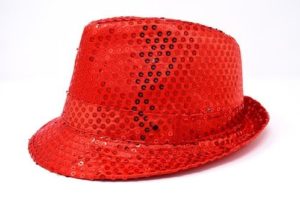
This suit:

And these shoes:

On second thought, maybe it’s a bit much.
Until next time, pay attention to the colors in your life and as always…PYMFP!
–Rick
What Do You Think?
 What is your favorite color? Do you find that certain colors affect your mood, emotions and motivation levels? Please share in the comments below.
What is your favorite color? Do you find that certain colors affect your mood, emotions and motivation levels? Please share in the comments below.
If you enjoyed this post, it would mean the world to us if you shared it with people you care about via any of the social media platforms below!
Popular Previous Posts:
This is How to Resolve Group Conflicts Like a Pro
Letting Someone Go With Dignity is the Right Thing to Do
8 Motivational Success Stories to Inspire You to Fight On!
23 Gym Tips That Will Really Optimize Your Time in the Gym
Supply and Demand Real Life Examples That Will Help You!
References
http://www.visualcapitalist.com/psychology-of-color-business/
https://smallbiztrends.com/2014/06/psychology-of-colors.html
http://www.emeraldinsight.com/journals.htm?articleid=1558119&show=abstract
http://www.empower-yourself-with-color-psychology.com/color-meanings-in-business.html
https://www.entrepreneur.com/article/233843
http://www.arttherapyblog.com/online/color-therapy-healing-an-introduction/#.Wx-o8fZFxPY
https://www.colorpsychology.org/how-colors-affect-our-everyday-lives/
https://www.brainyquote.com/quotes/pablo_picasso_138525
https://www.designhill.com/design-blog/starbucks-logo-overview-of-design-history-and-evolution/

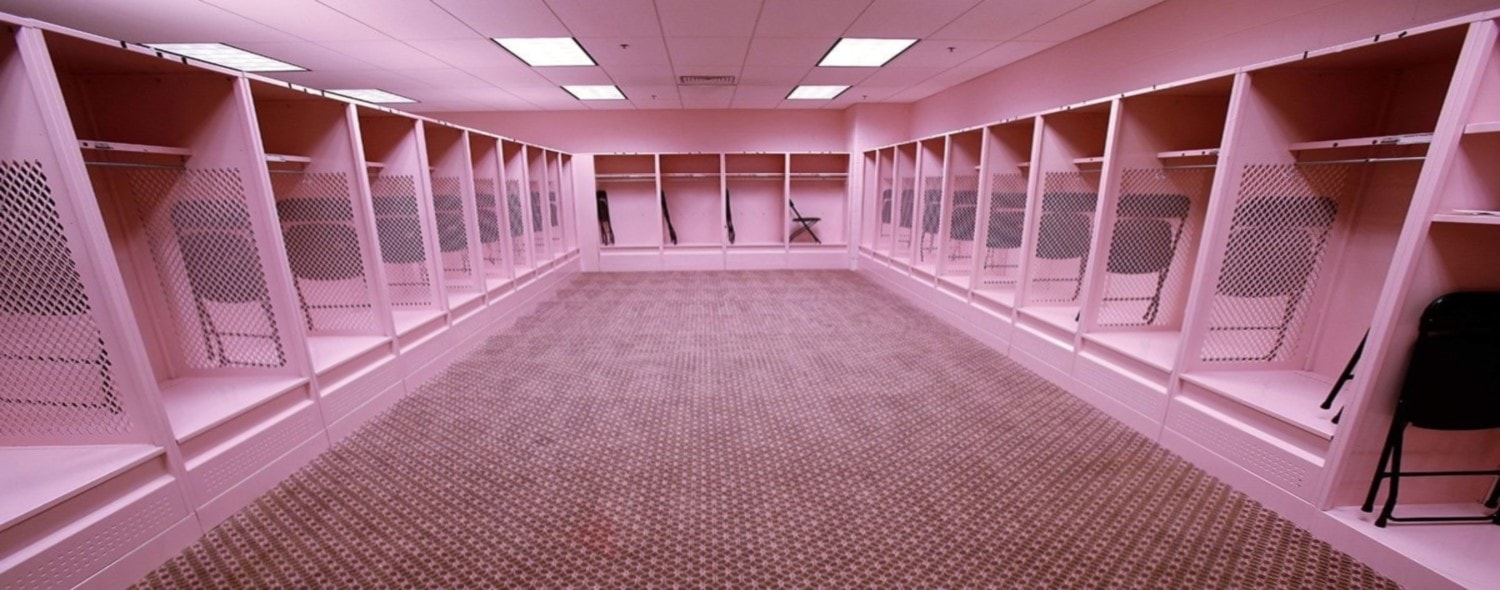
Very interesting! I heard about studies on how color influences people, but never really delved into the subject. You summed it up rather nicely. I have a touch of color blindness, which I inherited from my father. I can distinguish the primary colors, but when dealing with various shades and tones, I’m clueless. We have just repainted the house. My wife would bring home color samples of various paints, all earth tones with weird names like Mocha Swirl or Western Sunset, and ask which I preferred. My response: “Each one is both the same.” This conveys two points…A) I cannot differentiate one from the other, and B) A shit I did not give. So she picked one, and now that’s the color of the walls. She’s happy, therefore I’m happy, and life is good.
I am probably in the minority, when I say that color choices are not a priority in my life. I reach into the closet for a shirt and grab one – it could be red, or blue, or brown, or plaid, or whatever. Color does not factor into the decision. Similarly with cars – when buying a car (new or used), color has never influenced the final choice. I’m more interested in the mechanical workings (5 speed manual, no power steering), whereas my wife’s priority focuses on interior comfort (AC, cloth seats). So I drive a red pickup, she runs around town in the silver (or gray) van. Prior to that, I drove a gold truck, and she had a white wagon. Of course, I would never buy a car that’s painted pink – that’s reserved for Elvis Cadillacs and my Aunt Gladys, who drove a pink Pontiac in the mid 50’s.
A shrink would have a field day inside my head, but that’s not going to happen. I have never claimed I was normal. Of course, the definition of “normal” remains open to interpretation.
Where’s Bri? You seem to have been responsible for 80% of the articles over the past two weeks.
Great stories and thoughts Dave. Totally agreed, I’m not normal either, whatever that means! Bri has been doing a lot of traveling, she will be back soon. Enjoy the weekend with your CYT! Be good, Rick